order
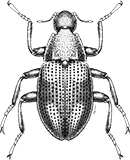
Coleoptera
“Adult Beetles”

Coleoptera
“Larval Beetles”

Diptera
“True Flies”

Ephemeroptera
“Mayflies”

Hemiptera
“True Bugs”

Lepidoptera
“Aquatic Caterpillars, Snout Moths”

Megaloptera
“Alderflies, Dobsonflies, and Fishflies”
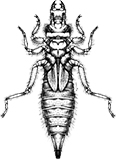
Odonata
“Dragonflies and Damselflies”

Plecoptera
“Stoneflies”

Trichoptera
“Caddisflies”
family
Ephydridae
genus
Ephydridae
“Shore Flies”
Genus Overview
There are at least 72 genera with 464 species of shore and brine flies occurring in North America. Usually they live in lentic-littoral habitats among vascular hydrophytes or floating algal mats, but they are also found on marine shores or on lotic margins, sometimes in puddles, and sometimes in extreme habitats such as thermal springs, high salinity lakes, or pools of crude or waste petroleum. Typically they are burrowers or sprawlers, but sometimes climbers or planktonic. They feed as collectors-gatherers (often of dung or decomposing snails or other carrion), leaf-mining shredder-herbivores, scrapers, or engulfing predators.
Characteristics
POLLUTION TOLERANCE
No pollution tolerance ranges defined.
FEEDING HABITS
Collector / Gatherer
Engulfer / Predator
Scraper / Grazer
Shredder / Herbivore
Engulfer / Predator
Scraper / Grazer
Shredder / Herbivore
MOVEMENT
Burrower
Sprawler
Sprawler
DISTRIBUTION
Widespread (east of the Rocky Mtns.)
HABITAT
Lentic-littoral
Diagnostic Characters
order
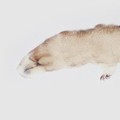
Legs Absent
family
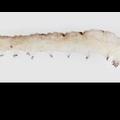
All Abdominal Segments with Hook-bearing Prolegs
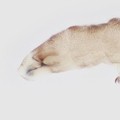
Head Retracted in Thorax
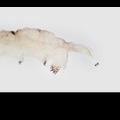
Respiratory Tube
+ Expanded Character List
Order:
Wings and wing pads absent. Eye spots sometimes visible, but compound eyes absent. Segmented legs absent, but sometimes fleshy prolegs present. Sometimes with distinct head, often without head or with head drawn deeply into thorax. Body flattened, cylindrical, or maggot-like.
Family:
The head is not evident, but is reduced to some sclerotized rods inside the thorax; there are no segmented legs; the end of the abdomen is somewhat tapered and usually ends in a long retractile respiratory tube that lacks tubercles.
Genus:
External sclerotized portions of head absent, leaving only internal skeleton. Integument of posterior abdominal segments covered with setae or spinules or seta-bearing tubercles on some segments. Anal division somewhat tapered, usually ending in one or two elongate retractile respiratory tubes lacking dorsal tubercles, with spiracular plates distinctly separated.

Lateral



